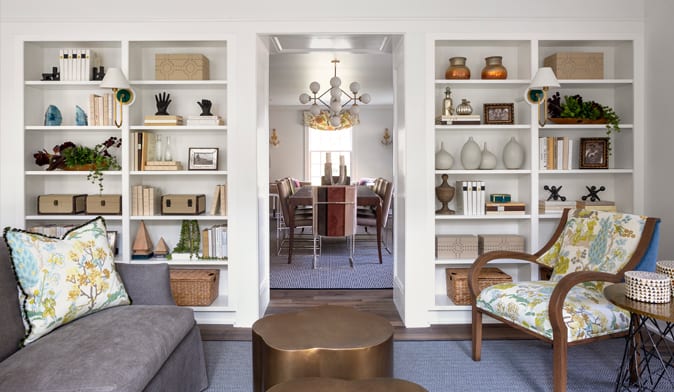When you are remodeling or designing a new house, it’s hard to know where to start! You want your final product to be beautiful, functional, and meet all your needs but don’t want to attend years of design school. We get it!
We’ve been designing homes for over fifteen years and we’ve learned how to design your room so it captures the essence of you. Using your unique style and values will ensure you love your space for years to come.
This article will help you do just that. Even if you are hiring design professionals, it’s important to understand the process so you can get the perfect design.
In this post, we’ll walk you through how to design a room in 10 simple steps. This way, you can plan and decorate your room with the same process as a professional interior designer!
To design and decorate your room, simply follow these steps:
- Determine the Room’s Function
- Measure Your Space
- Find Your Inspiration
- Create a Mood Board
- Set Your Color Palette
- Choose an Anchor Piece
- Select Accent Pieces
- Create a Lighting Scheme
- Weave in Textiles
- Add Finishing Touches
Transform your Winter Park home with our luxury interior design services. We look forward to helping you achieve all your goals for your high-country home or office.

1. Determine the Room’s Function
Here’s how to design a room: the most basic consideration is how you will use it.
Will this space be a dining room? Great, then how many people on an average day will need to be able to fit at the table? Do you entertain guests? How often? What kind of drinks will you have in the room? Do you need furniture with special surfaces to stand up to stains? Or maybe you’re designing a bedroom. Will this be a master bedroom? Maybe a guest room? What size bed is necessary? Do you also need a space to sit in this room? Will you be sleeping here only at night or does this room need blackout curtains for daytime naps? Will you be working in this room? What sort of comfort does it need? Does it need to be quiet for working time or is this a loud room for entertaining the whole family? Will the room need to serve different uses at different times?
Once you have a clear idea of the function of the room, you can begin designing for it.
Tips:
- Spend some time in the room, getting to know it, and asking yourself questions about how it will function for your family.
- Think about your furry family members. How do your pets fit into the space? How will they use it?
- Consider how light moves across the space during the day. Will you be here more in the morning, evening, or at night?
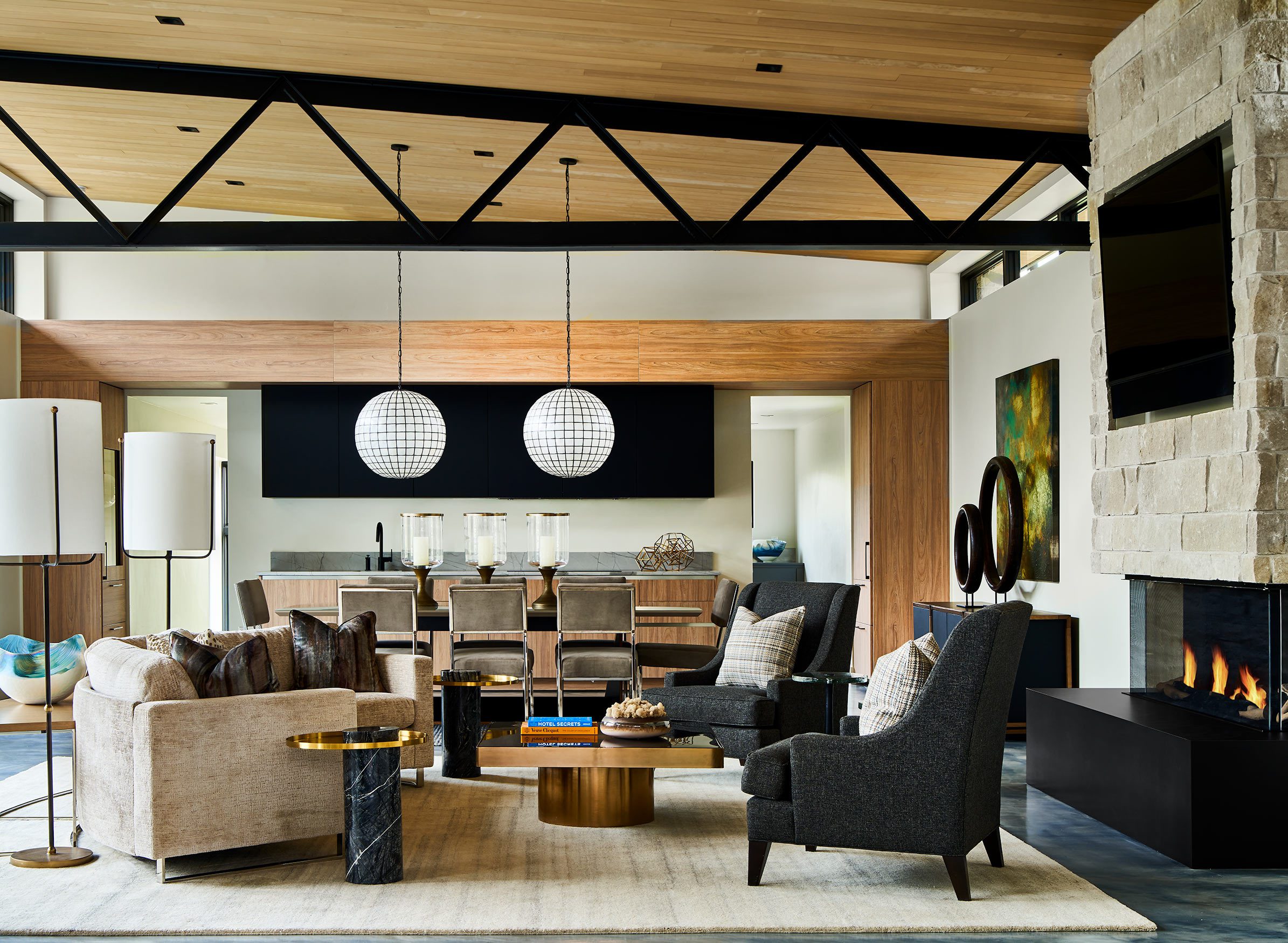
2. Measure Your Space
Let’s get a grasp of the space we’re working with. This doesn’t just mean the overall length and width. This means every nook & cranny, every bump out, every spot that may take up space on the floor or ceiling.
After we measure, we create the room in a computer program. Most Interior and Architectural firms use AutoCAD or Revit. This is where using a professional designer really comes in handy.
The creation of a digital model is a foundational step in the design process. With a completed floor plan, we gain a comprehensive understanding of the space and how different elements interact within it. This model doesn’t just serve as a static blueprint; it’s a dynamic tool that we will use to experiment with different designs and visualizations. It allows us to preview what the finished room will look like, making adjustments and refinements as needed.
Creating a digital model ensures the accuracy of the design and provides a visual reference for making informed decisions about the layout, furniture placement, and overall aesthetic of the room. In essence, it bridges the gap between conceptualization and realization, ensuring that the final outcome is both functional and visually appealing.
Here are some options for software you can use on your own:
- Floorplan Creator – This one is simple and easy to use
- SmartDraw – A more versatile tool for creating plans and workflows
- VectorWorks – A more complex option. This building modeler has many professional features
Tip – How to Design Your Room
Make sure your dream design fits in the room! Save yourself heartbreak from going too big and having to scale back.
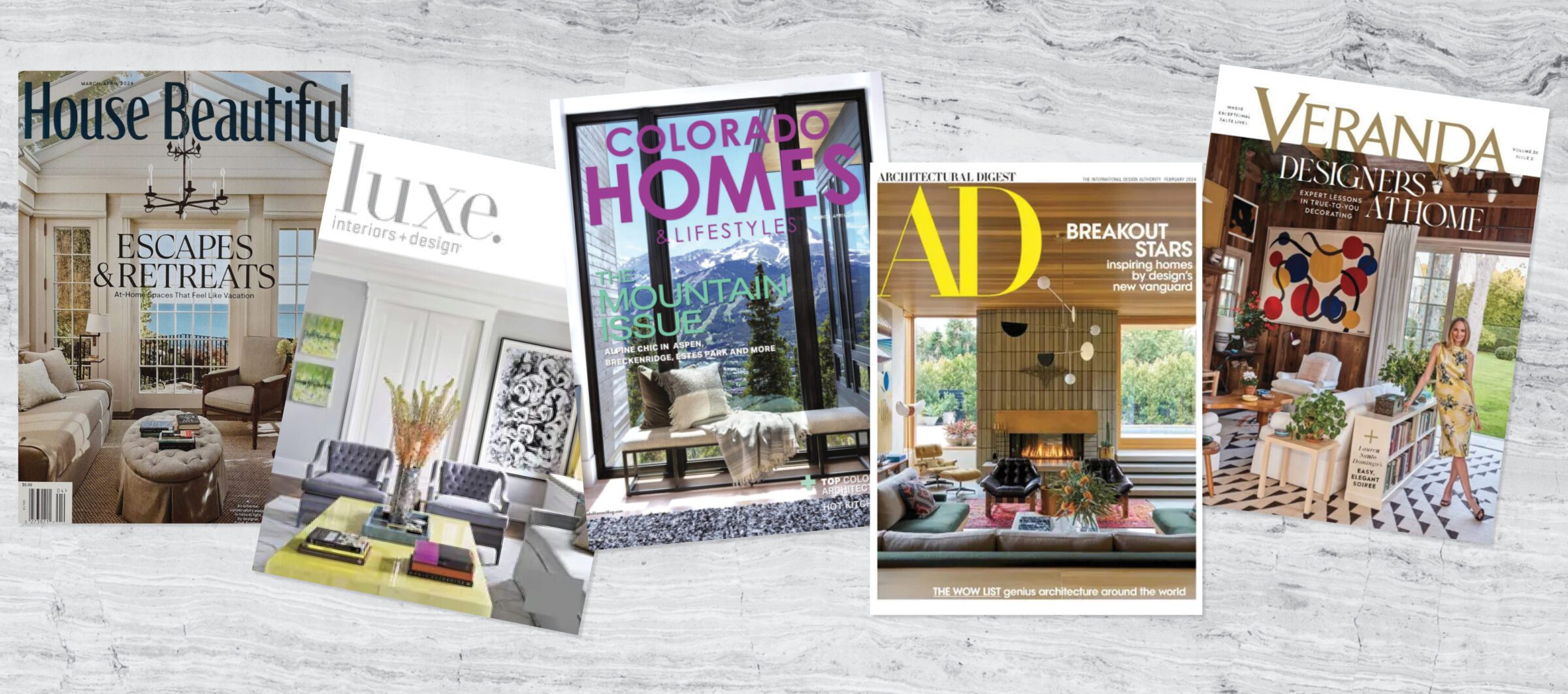
3. Find Your Inspiration
Embarking on a journey to transform your space begins with a spark of inspiration.
There’s tons of design inspiration online. You can delve into online resources and design magazines to gather ideas that resonate with a style you love. Websites like House Beautiful offer chic and stylish home tours that can ignite your imagination, while platforms such as Pinterest boast an extensive collection of interior design ideas ranging from modern and minimalist to eclectic and bohemian.
As you explore, make it a point to curate a collection of images that speak to you—those that evoke a sense of excitement and possibility. This process isn’t just about identifying what you love; it’s equally important to note what you don’t like. This will help you refine your vision, ensuring that your final design truly reflects your individuality. Remember, this is more than just redecoration; it’s an opportunity to redefine your living space, making it a true expression of yourself.
4. Create a Mood Board
Once you’ve collected the images you love, the next step is to distill these inspirations into a cohesive mood boards. A mood board serves as a tangible representation of your aesthetic aspirations, helping to crystallize your design direction.
By juxtaposing the different elements you’ve selected, you’ll start to see a theme or a pattern emerge—be it a color scheme, a material preference, or a stylistic approach. This clarity helps you find what you love, ensuring that each choice contributes to a harmonious home.
In creating your mood board, don’t be afraid to think outside the box. Inspiration can come from unexpected places—an architectural detail from a building you admire, the ambiance of a favorite café, or even the palette of a cherished artwork. Allow these varied influences to guide your selection process, blending them into a unique vision that screams “you.”
Tips:
- Look for recurring themes or elements in the images you’re drawn to. This could be specific furniture, colors, textures, styles, or even moods.
- Noting what you don’t like can be as important as identifying what you love. It helps in avoiding design elements that won’t satisfy you in the long run.
- Think outside of the house. Incorporate elements from fashion, art, architecture, and nature. This can add a unique and personal touch to your mood board.
- Don’t hesitate to share your mood board with friends, family, or a professional designer. Fresh eyes can offer valuable insights and suggestions.
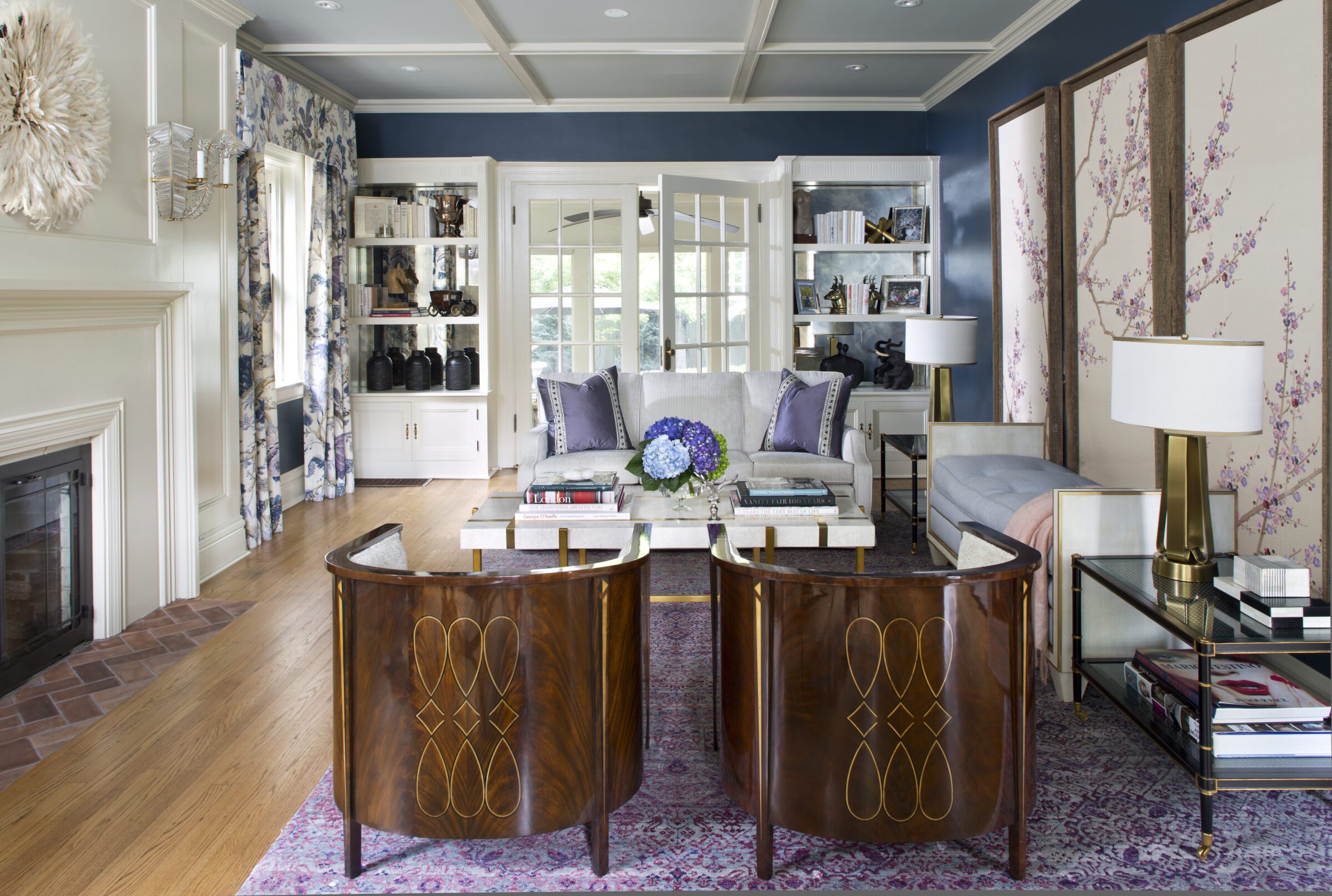
5. Set Your Color Palette
A color palette is like the soundtrack for your room—it sets the tone and atmosphere. Begin with colors that naturally draw you in. If you’re unsure, look to your mood board for recurring hues. Consider how each room flows into the next and aim for a harmonious transition throughout your home.
Different colors evoke different moods. For example, green hues can bring the tranquility of nature into your home, promoting relaxation and calmness while vibrant colors like yellow or orange can energize a space.
Before committing to a color, it’s important to test paint samples on your walls. The lighting in your home impacts how a color appears. A shade that looks perfect under the store’s fluorescent lighting might look entirely different in your living room’s natural daylight or your bedroom’s soft lamp light. Try different shades and tints of your chosen colors to find the best fit for your space.
Consider how colors in one room will flow into the next. This doesn’t mean every room should be painted the same color, but there should be elements that tie them together. This could be achieved through repeating accent colors, using varying shades of the same hue, or incorporating a consistent neutral tone throughout.
Neutral colors serve as a fantastic foundation for any color scheme. They can add warmth or coolness to a room and provide a backdrop that allows your accent colors to stand out. According to Havenly, combining neutrals with jewel tones can create a sophisticated yet vibrant space, offering a modern twist on classic elegance.
By carefully considering these aspects when selecting a color palette, you can create a space that is both beautiful and uniquely yours. Remember, the goal is to create a home that feels coordinated but not uniform, allowing each room to express its own character while feeling cohesive with the house.
Tip – How to Decorate Your Room
If you find yourself stuck, not sure what aesthetic you want to pursue, it’s time to go back to the inspiration. The more you can identify what you want, the easier it is to choose colors and furniture pieces.
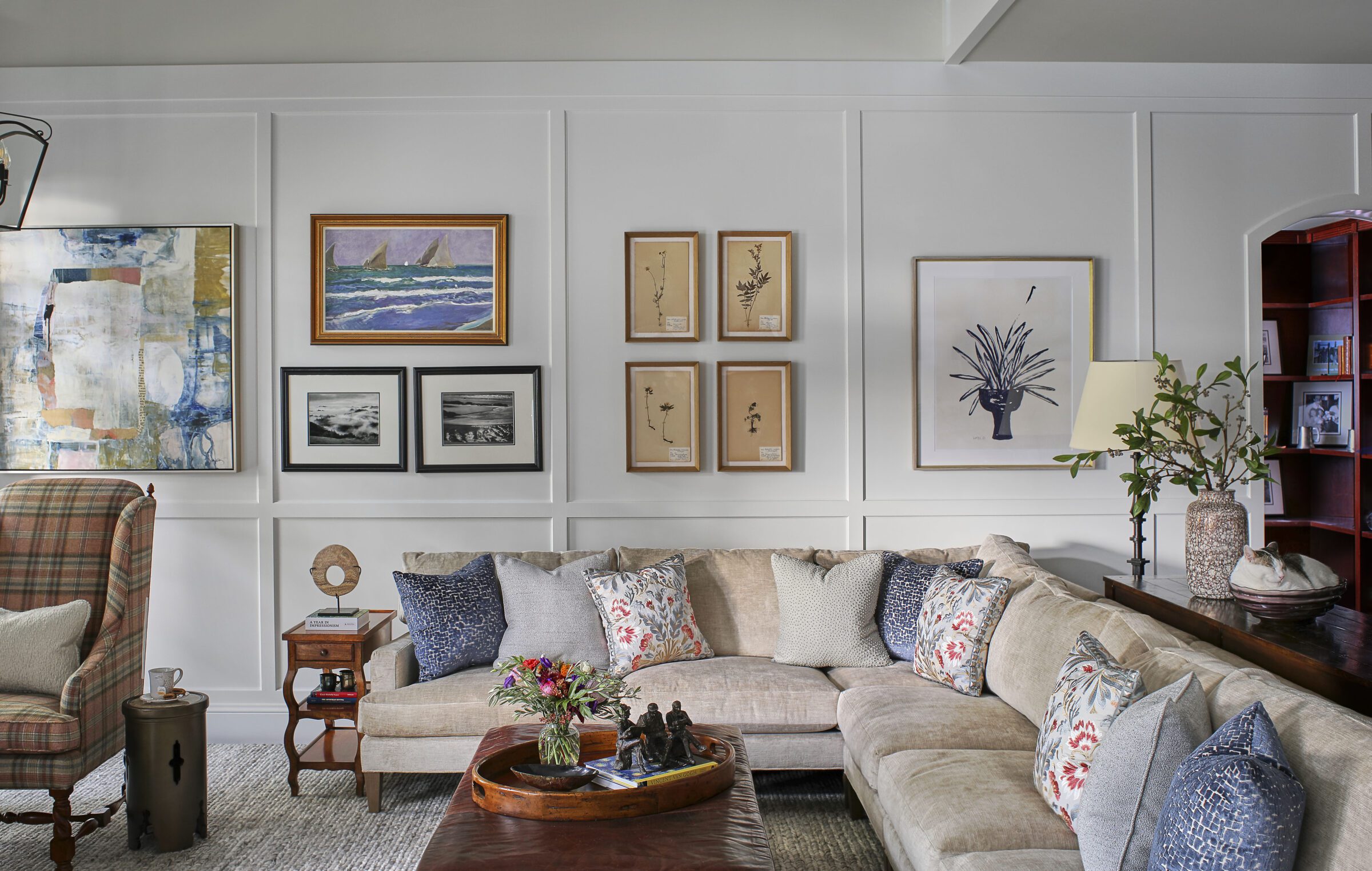
6. Choose an Anchor Piece
An anchor piece is the cornerstone of your room’s design; it’s the item around which everything else revolves. This could be furniture like a statement sofa in the living room, a grand bed in the bedroom, or a striking dining table. Choose something that you love and reflects your style—this piece will dictate the room’s direction. Consider scale, color, and function, so that it will fit comfortably within your space and serve your needs. And don’t forget how this furniture will fit into your home!
Some considerations:
1. Scale and Proportion:
The size of your anchor piece relative to your room is crucial. It should be proportionate to the space available—large enough to stand out, yet not so big that it overwhelms the room. Measure your space carefully before making a decision about furniture.
2. Color and Pattern:
The color or pattern of your anchor piece can influence the color scheme of the entire room. If you opt for a bold or vibrant piece, you might choose more subdued hues for the rest of the room to balance the visual weight. Alternatively, a neutral anchor piece can serve as a versatile foundation for incorporating varied colors and textures through accessories and accents.
3. Functionality:
Beyond aesthetics, consider how the piece will be used in your daily life. For instance, furniture like a living room sofa should not only be visually appealing but also comfortable and durable enough to withstand regular use. Similarly, a dining table should accommodate your typical number of guests while fitting comfortably within the space.
4. Personal Connection:
Your anchor piece should resonate with you on a personal level. It could be something that sparks joy every time you enter the room, a piece with sentimental value, or an investment piece that you’ve long admired. This emotional connection ensures that your space feels uniquely yours.
5. Versatility:
While it’s important for your anchor piece to make a statement, consider its versatility in adapting to future changes in your decor. A piece of furniture that can harmonize with various styles and palettes will serve you well over time, allowing your space to evolve without necessitating a complete redesign.
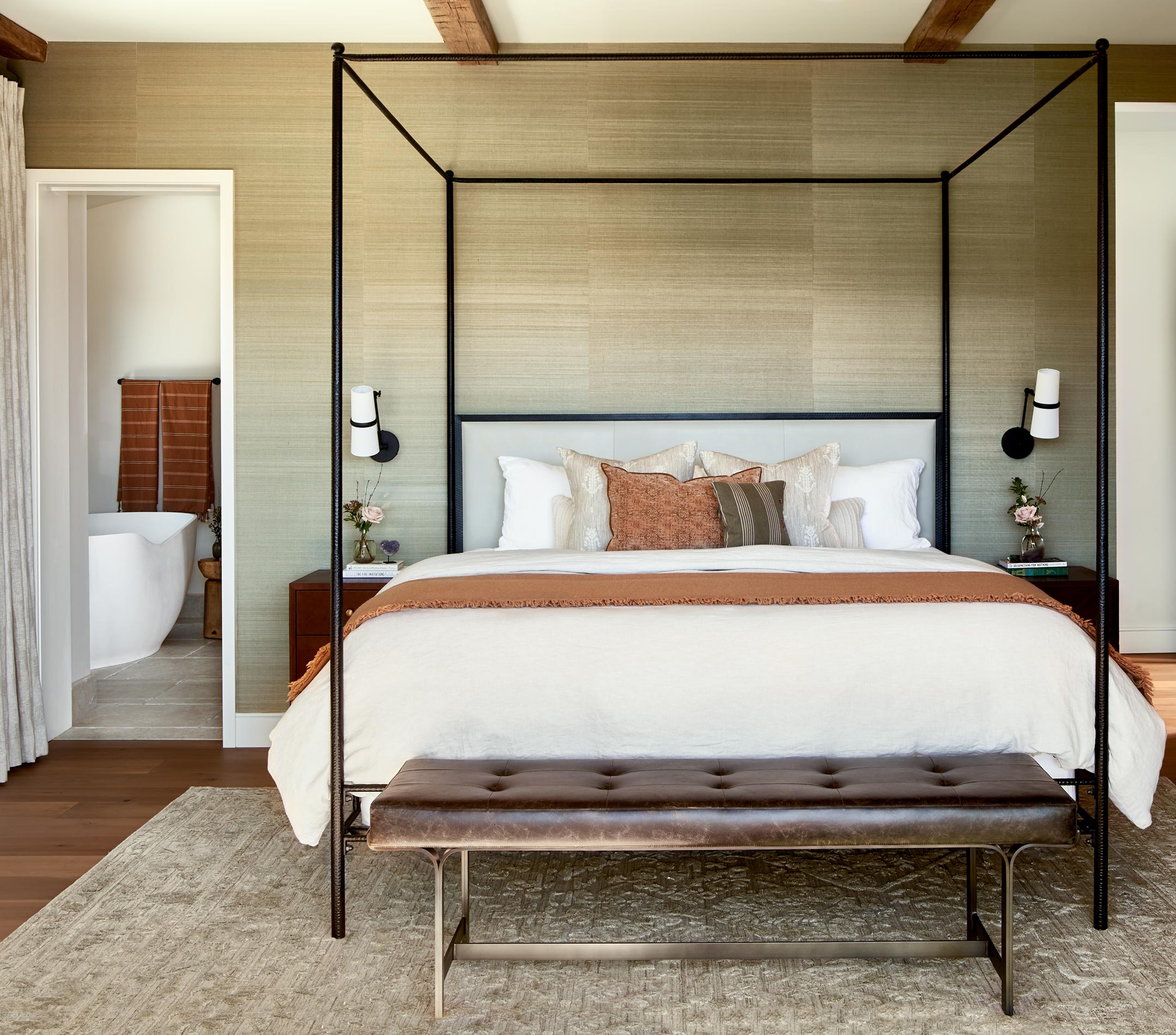
7. Select Accent Pieces
Accent pieces are the supporting characters that complement your anchor piece and complete the story of your room. They can include furniture like side tables and chairs, artwork, and decorative objects. When choosing these items, think about balance and contrast.
You want to create visual interest without overwhelming your space. Play with textures, colors, and shapes that echo the theme set by your anchor piece, but make sure it is building towards your larger vision. Here’s what to think about when choosing accent pieces:
Balance and Contrast:
It’s important to strike the right balance. Your accent pieces should not compete with your anchor piece for attention; instead, they should enhance and complement its presence in the room. This can be achieved by selecting items that share a common thread with the anchor piece—be it color, material, or style—while introducing elements of contrast to keep the space engaging.
Textures:
Try varying the textures of the room. If your anchor piece has a smooth, sleek finish, consider accent pieces with rougher, more organic textures, such as a knitted throw or a rattan chair. The interplay of textures can create a layered look that adds depth and dimension to your space.
Colors:
Color is a powerful tool in creating mood and cohesion. Select accent pieces in colors that complement or thoughtfully contrast with your anchor piece. You can draw from the color palette of your anchor piece, selecting hues that are either adjacent on the color wheel for harmony or across from it for a bold contrast. This approach ensures your room has a consistent theme while allowing for bursts of color that bring life to the space.
Shapes:
Playing with shapes can add visual interest and movement to your room. If your anchor piece has a strong, angular shape, you might introduce accent pieces with softer, rounded edges to create a sense of balance. Alternatively, repeating similar shapes throughout the room can reinforce a particular style or motif.
Personal Touches:
Accent pieces are an excellent opportunity to infuse your space with personal touches. Artwork, family heirlooms, beloved furniture, travel souvenirs, and handmade items can all serve as meaningful accents that tell your unique story. These pieces add a layer of individuality and warmth that makes your space truly feel like home.

8. Create a Lighting Scheme
Good lighting is essential for setting the mood of your room. Start with ambient lighting to provide overall illumination—think ceiling fixtures or recessed lights. Next, add task lighting, such as reading lamps or under-cabinet lights, to support specific activities. Finally, incorporate accent lighting to highlight architectural features or artwork. Play with different levels and sources of light to add depth and warmth to your space.
Here’s how:
Ambient Lighting: The Foundation
Ambient lighting, also known as general lighting, serves as the foundational layer of illumination in a room. It provides a uniform level of light, ensuring the space is comfortably visible without harsh contrasts. Ceiling fixtures like chandeliers, flush mounts, or recessed lights are common sources of ambient lighting.
Task Lighting: Enhancing Functionality
Task lighting is focused, directional lighting designed to assist in performing specific activities, such as reading, cooking, or working at a desk. This layer of lighting is all about precision and avoiding eye strain.
Accent Lighting: Adding Drama and Focus
Accent lighting is used to draw attention to specific points of interest within a room, such as artwork, sculptures, or architectural features. This type of lighting adds depth and dimension, creating visual interest and highlighting the room’s best features.
Playing with Levels and Sources
Integrating multiple levels and sources of light allows for greater control over the room’s atmosphere. Combining overhead lighting with floor and table lamps creates layers that add depth and warmth to your space.
Warmth and Color Temperature
The warmth or coolness of the light, measured in Kelvin (K), also impacts the room’s ambiance. Warmer lights (lower Kelvin values) create a cozy, relaxing atmosphere, ideal for living rooms and bedrooms. Cooler lights (higher Kelvin values) are energizing and better suited for spaces like kitchens and home offices where focus and alertness are important.
Tip – How to Set Up a Room
Remember that a room needs to be functional above all else. Really think through how you’re going to use the room and what it needs for you to want to spend time there.
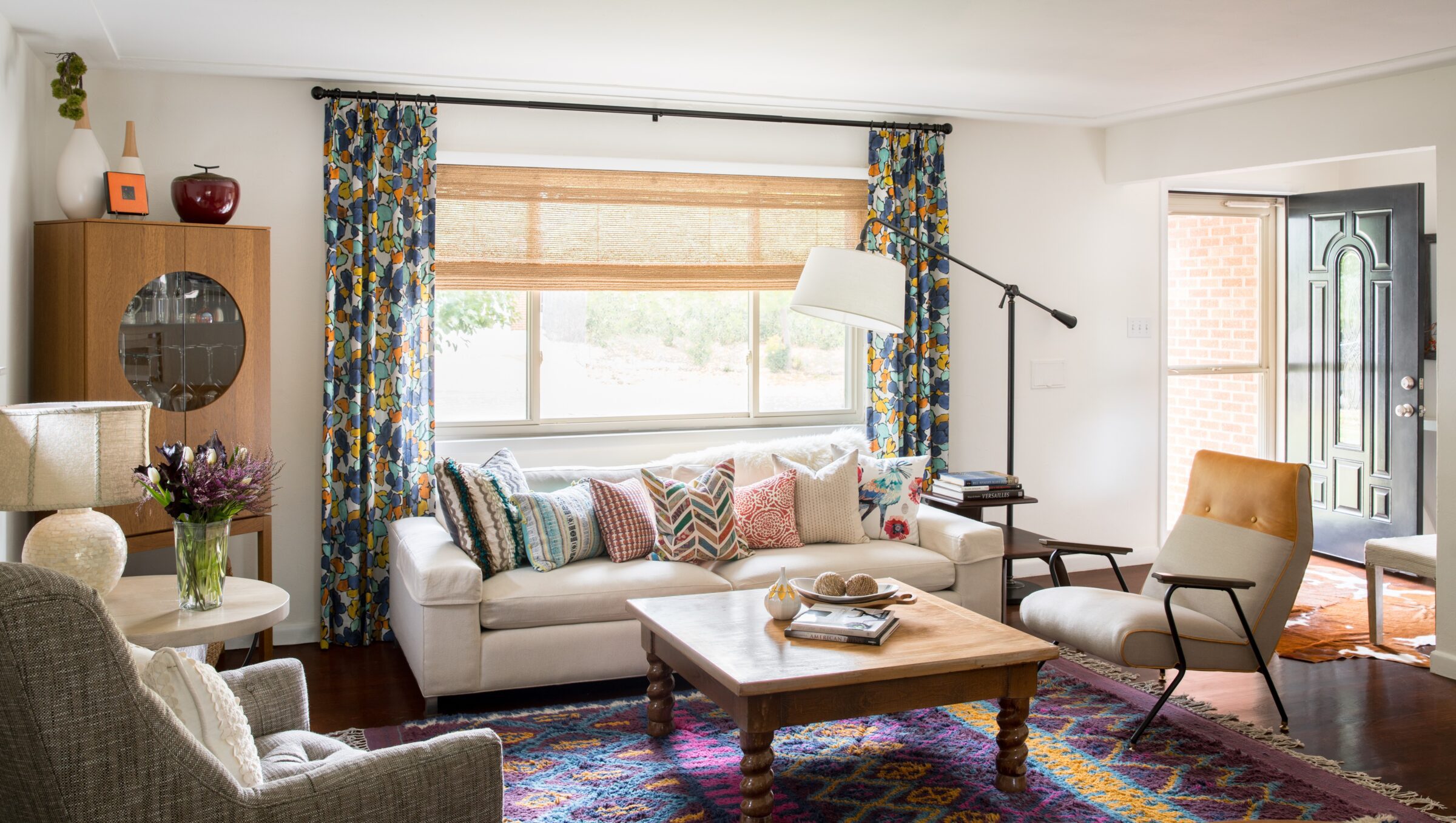
9. Weave in Textiles
Here’s the secret to how to decorate a room: You probably already have an instinctual idea for what textiles you like. Don’t overthink it! Go with your gut. When clients come in we show them a variety of fabrics and have them answer without thinking – “yes, I like this” or “no, I don’t like this”.
Armed with your favorite textiles for the room, weave them in as area rugs, window treatments, pillows, throws, and the like. Consider the feel of your textiles – this is your chance to bring comfort into the room.
Tips:
- Consider the Scale: When mixing patterns, vary their scale. Combine larger prints with smaller ones to avoid visual clutter.
- Functionality Matters: Choose textiles that not only look good but are also suitable for their intended use. For example, durable fabrics are better for upholstery if you have pets or children.
- Seasonal Swaps: Consider changing some textiles with the seasons. Lighter fabrics can refresh a room in spring and summer, while heavier ones can add warmth in fall and winter.
- Test Under Lighting: Textiles can look different under various lighting conditions. Check how your chosen fabrics look during the day and under artificial light at night.
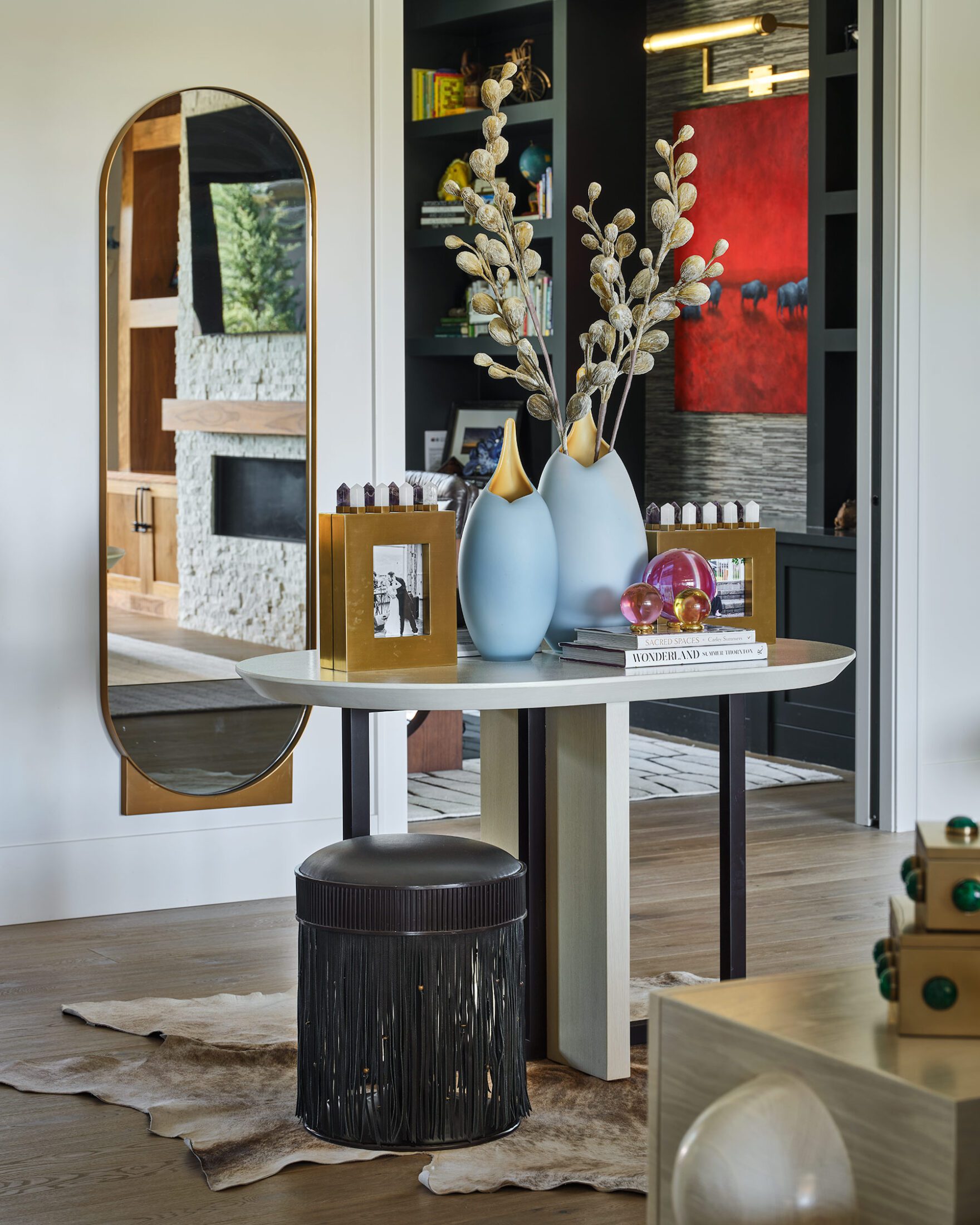
10. Add Finishing Touches for Style
The finishing touches are what make your room feel uniquely yours. They make your house a home. This includes personal photographs, collections, plants, and anything else that speaks to you. Arrange these items thoughtfully, creating vignettes or focal points that draw the eye. Remember, less is often more—allow space for your treasures to stand out and tell their stories.
Here are some personal touches you could add:
- Photographs: Photographs are windows to memories, moments, and the people we hold dear. Select frames that complement your room’s aesthetic—be it sleek and modern, ornate and vintage, or anything in between.
- Collections: Whether you collect vintage books, ceramics, travel souvenirs, or vinyl records, find a way to display these items that both protects them and allows them to be appreciated.
- Passions: Let your room reflect your hobbies, passions, and dreams. Musical instruments, sports memorabilia, art supplies, or books about subjects you love can all find a place in your design, telling guests more about who you are.
- Plants: Greenery brings life, color, and freshness into any room. Choose plants that suit your lifestyle and the room’s light conditions.
- Lighting: Use accent lighting to highlight artwork, collections, or even a beautiful plant. Soft, warm lighting can make photographs feel cozier and more inviting.
- Negative Space: The space you don’t fill is just as important as where you choose to place items. Negative space allows your selected pieces to shine more vividly and contributes to a more refined and intentional design.
Design a Room You Love
Creating a beautiful, functional room is a journey of discovery, blending practicality with personal style.
Each step, from choosing a color palette to adding those final touches, is an opportunity to express yourself and craft a space that truly feels like home.
Armed with these guidelines, you’re well on your way to designing a room that not only looks great but feels perfectly suited to you.
